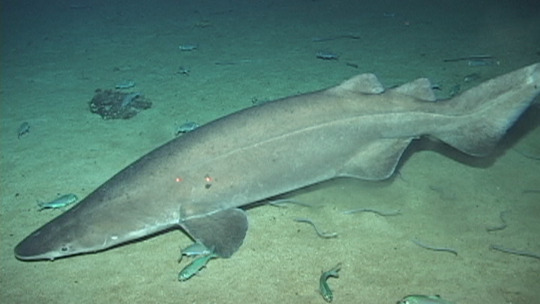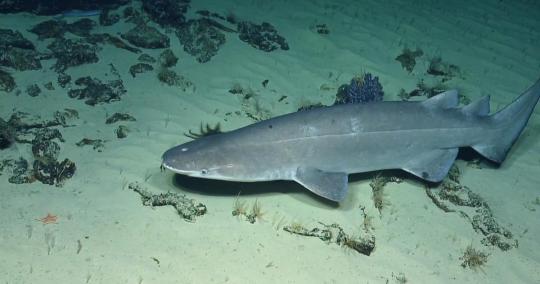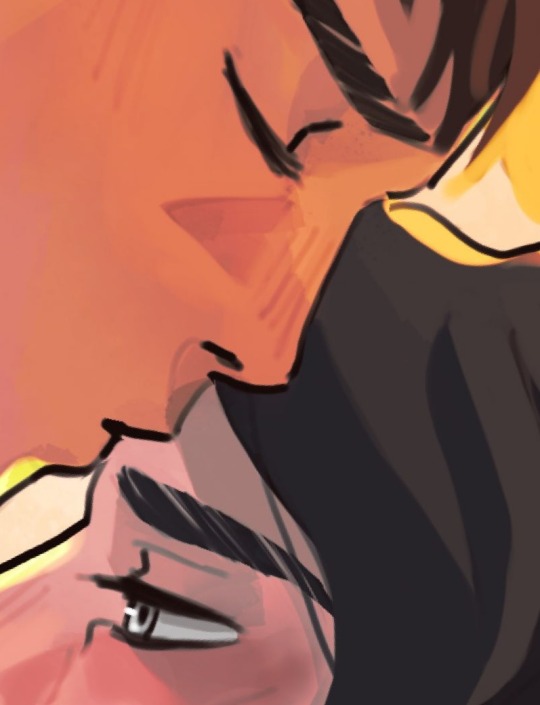#$0.16
Text
I FOUND A SHEEP IN MINECRAFT THAT SPAWNED WITH PINK WOOL NATURALLY LET'S FUCKING GOOOOO

#there's like a 0.008 - 0.16% chance of it happening in so stoked#.008% to spawn as a baby pink sheep and a .16% to spawn as an adult pink sheep#id like to think that it happened cuz i made my house in the middle of a cherry grove on the top of a mountain#ruby speaks#minecraft
3 notes
·
View notes
Text
0.41 xG yesterday is our worst offensive performance in the league under klopp u simply have to laff
#the only time we had lower was the uel loss against USG (0.3)#and the 1-0 fa cup win against wolves last january (0.16)
0 notes
Text
i love being right (suspected drivers ed instructor was greatly misrepresenting statistics and was right)
#yes 5000 teen drivers dying a year is more than 1300 peopel dying in afganistan#but there are more teen drivers?#for a vet it sure feels like you’re downplaying the seriousness of it#anyway 0.06% of teen drivers in the us die each year vs 0.16#not good#but lets not emphasise one by downplaying the other#and yes 3 people crash into trains an hour…#but thags some 0.0006% of people driving each hour#thats#hmm#insteresting#anyway#dont drive if you can help it#its better for you and the city if you walk#bike#or take public transport#trains are amazing#use those more#im only getting my permit because my dad said i have to before i can get my scuba certification#might have been liscence…#i forget what we agreed#car are super dangerous#i dont like them#we’re making the problem worse with every new road#cars are the root of so many problems in cities and towns it actually impressive
0 notes
Text
me & my mom are soooooooo incredibly FUCKED right now!!!!
#I need to make a donation post#like fucking immediately#but#that’s so fucking difficult#and I have not had good experiences with them in the past#and I do not know if it’s worth putting my personal info out there for the chance of getting $12#(between my last two donation posts I received $12.78)#(it was two donations. one of them was $0.16)#lous clues
0 notes
Text
Expiry Date Checker is an iPhone app to track expiry dates of food items or any general item. Only Item name and expiration dates are required fields. Additionally you can assign category, location and tags. Item can be selected from master list or previous history or can be entered using barcode scanning/ Item can filter and sorted. Easy to update any A calendar event with reminder is generated. Any item can be updated or deleted. A history of items is maintained so that subsequent entries can be entered easily. Easy interface. Sort and Filter item by Category, Location and Tags. A Calendar event with reminder is created for each entry. The app is multilingual. Supports 27 languages including Spanish, European, Arabic and East Asian languages.
App link: http://bit.ly/3ZJR2J
#barcode- 100.00%#artist- 0.94%#artistic_unity_- 0.16%#artshub- 0.16%#artsxdesign- 0.16%#beyondsurreal- 0.16%#creativemobs- 0.16%#barcode
0 notes
Video
youtube
ASX Daily Market WRAP 30 January 2023
#youtube#ASX Daily Market WRAP 30 January 2023 The S&P/ASX200 closed lower Monday dropping 12.10 points or 0.16% to 7481.70 after setting a new 100-d
0 notes
Text
Man I really need to close that old redbubble account
1 note
·
View note
Photo

Myojin of Grim Betrayal
Artist: Jason A. Engle
TCG Player Link
Scryfall Link
EDHREC Link
#mtg#magic the gathering#tcg#$0.16#jason a. engle#myojin of grim betrayal#neon dynasty commander#legendary#creature#spirit
40 notes
·
View notes
Text
One of the world’s top arms exporters, Israel exports annually as much as $7 billion worth of military technology, or 2.2 percent of its Gross Domestic Product. An additional 1.35 percent of GDP is dedicated to military research and development, and 6.7 percent is spent on its defense budget— the world’s second largest military budget as a percentage of GDP after Saudi Arabia. All told, 10.25 percent of the Israeli economy is involved directly in arms. Comparatively, for the United States, the world’s top weapons exporter, arms account for around 3.7 percent of its economy. Israel is actually the world’s largest arms supplier per capita, according to data from the Stockholm International Peace Research Institute and the World Bank, at ninety-eight dollars; it is followed by a distant Russia at fifty-eight dollars, and Sweden at fifty-three dollars.
These figures do not include the contribution from natural resources exploited under occupation in the West Bank and Gaza.50 They do not factor in the service sector’s revenue or general industry and construction taking place in the West Bank. Such figures are difficult to quantify, since many companies operate in the West Bank but have offices in Tel Aviv to obscure where operations take place. Nor does this account for Israeli exports into the Occupied Territories, which are 72 percent of Palestinian imports and 0.16 percent of Israeli GDP. All told, the Israeli economy is deeply involved in a web of expenditure and profit around the ongoing occupation and expansion of settlements.
American military aid supplanting open-ended government grants has had the effect of increasing arms production and diminishing the overall economic reach of the state. No longer is foreign aid and imperialist incentive directly invested in the working class. Israeli workers are now rewarded through the arms economy. This is why, despite the lack of social mobility and the economic degradation of neoliberalism, the working class remains committed as ever to Zionism.
The working class has become dependent on the education, housing, and career opportunities that their participation in the IDF affords them. They have found routes for advancement in the military-fueled high-tech industry, with over 9 percent of workers concentrated in high-tech. And as pensions and real wages are eroded, the cheaper cost of settlement living in the Occupied Territories has become essential.
349 notes
·
View notes
Text
"Similar to the expeditions of a hundred or two hundred years ago, the Tara Pacific expedition lasted over two years. Its goal was to research the conditions for life and survival of corals. The ship crossed the entire Pacific Ocean, assembling the largest genetic inventory conducted in any marine system to date. The team's 70 scientists from eight countries took around 58,000 samples from the hundred coral reefs studied.
The first results of the analysis have now been published in Nature Communications. This largest-ever data set collection on coral reef ecosystems is freely available, and for years to come, will be the basis for elucidating the living conditions for corals and finding a way for them to survive climate change.
Important first results of the expedition show that global microbial biodiversity is much higher than previously thought. The impacts of the environment on evolutionary adaptation are species-specific, and important genes in corals are duplicated.
Global biodiversity ten times higher than assumed
Coral reefs are the most biologically diverse marine ecosystem on Earth. Although they cover only 0.16% of the world's oceans, they are home to about 35% of known marine species. Using a genetic marker-based data set, the researchers found that all of the globally estimated bacterial biodiversity is already contained in the microorganisms of coral reefs.
"We have been completely underestimating the global microbial biodiversity," says Christian Voolstra, professor of genetics of adaptation in aquatic systems at the University of Konstanz and scientific coordinator of the Tara Pacific expedition. He says the current estimate of biodiversity (approximately five million bacteria) is underestimated by about a factor of 10.
Impacts of the environment on evolutionary adaptation are species-specific
The 32 archipelagos studied serve as natural laboratories and provide a wide range of environmental conditions, allowing scientists to disentangle the relationships between environmental and genetic parameters across large spatial scales. This led to another important finding: The effects the environment has on evolutionary adaptation trajectories of corals are species-specific. To determine this, the researchers examined the telomeres, the ends of chromosomes that are the carriers of genetic information, for the first time.
In humans, the length of telomeres decreases during life; that is, with an increasing number of cell divisions, suggesting that biological age is closely linked to the length of telomeres. Researchers on the Tara Pacific expedition have now found that the telomeres in very stress-resistant corals are always the same length. "They apparently have a mechanism to preserve the lengths of their telomeres," Voolstra concludes...
Important genes are duplicated
Research data from the Tara Pacific expedition brought to light that the long life of some coral species may have yet another reason: the duplication of certain genes. Many important genes are present multiple times in the genome. The researchers were able to determine this through sequencing of coral genomes employing a new high-resolution technique.
This technique, called long-read sequencing, makes it possible to not only determine the set of genes present, but also to look at their order in the genome. According to Voolstra, the pervasive presence of gene duplication could be a possible explanation for why corals can live for thousands of years despite being exposed, for instance, to extreme UV radiation in shallow waters.
The entire data collection is freely accessible
All data sets are openly accessible and fully described with accompanying physical and chemical measurements to provide them as a scientific resource to all researchers.
"This is unique," Voolstra says. "It is the largest data set collection on coral reefs ever collected and it is completely open access." The aspiration is that this data collection will serve as a foundation and inventory to guide future study of coral reefs worldwide for many years."
-via Phys.org, June 26, 2023
#coral#coral reef#ocean#ocean conservation#biodiversity#microbiology#genetic diversity#genetic research#conservation#telomeres#genetics#climate change#evolution#ocean life#open access#good news#hope
400 notes
·
View notes
Text
hey all, the CDC identified a cluster of mpox cases in Chicago and UK authorities identified one in London. If you have >5 casual sex partners per year or have close (regularly sharing clothes or bedding) contact with someone who does, please take precautions. Vaccines are still available, launder bedding more frequently, check for rashes regularly on those you're close to, etc.
mpox has a very very low case fatality rate in western countries (0.16%). the vast majority of deaths are among already severely immunocompromised people (primarily uncontrolled HIV)—if you fall into that category, please be aware of the risks.
Most county health departments have some vaccine doses available. The CDC estimates that 1.2 million people are in the eligible population for mpox (casually sexually active or sex partners of those who are). You can review the criteria and search for a vaccine here. You can also review the CDC's mpox safety guide here which all seems pretty straightforward and common sense to me (the most urgent of which is "please for the love of god don't touch other people's rashes" and the funniest of which is "consider having sex with clothes on or masturbating at a distance")
#making this post because i don't want to see any scare mongering bullshit on my dash again this year#and if you do scare mongering bullshit on this post i will block you. you've been warned
460 notes
·
View notes
Text
So we got the stats for IS3 today, with its runtime officially over.
0.16% of doctors collected all relics.
And we all fucking know why. Because of head-ass relics like Pathfinder Fin (you will literally never get this if you don't play with the Dice squad), Silver Forks and Cathedral Puzzle.
This got me to think long and hard about why I ended up *not* 100%ing all of IS3 - I never got the Pathfinder Fin even after I did All Endings All Squads before the content expansion, and I just couldn't make myself grind more dice squad (which I did not enjoy, as the dice mechanic largely sucked until the content expansion)
Goodbye IS3. You were in so many ways a huge improvement over IS2. No longer did we have to do 5-6 runs just to get to see the ending 3 or 4 encounter chain happen once. The maps were much faster and generally more challenging. You had a much more fleshed-out difficulty system. Better relics that led to more fun combos.
Goodbye IS3. You were a fucking disappointment full of glaringly half-baked implementations and poor design decisions. Whether it was the completely asinine unlock requirements for some of your relics, the completely binary light mechanic where you either had 100 light or no light as far as curses went, the poorly laid out difficulty curve (+1 hope cost, literally the single biggest swing, at level 4? rather than the nothingburgers that they put at 13 and 14?), two of the worst bosses in all of Arknights (I'm looking at you, The Last Knight and Izumik) and generally the lingering feeling that you could have been SO much better if only they'd actually put more thought into the supporting mechanics for each run.
I will miss you, but not nearly as much as I could have.
104 notes
·
View notes
Text
🦈 Daily Shark Fact: 🦈
A Prickly Shark's skin has a dense, uniform covering of non-overlapping dermal denticles measuring up to 0.16 in across, which are never fused together. Each denticle is thorn-like, with strong ridges running down the central spine and radiating out over the star-shaped base.


#prickly shark#shark blog#advocacy for sharks#respect the locals#shark awareness#save the sharks#sharks#cartilaginous fish#shark facts#daily shark facts#facts about sharks#shark post#sharks of tumblr#shark tumblr#just a girl who loves sharks#i love sharks#fyp#the more you know#protect the sharks
71 notes
·
View notes
Text
New art on my boosty, Jeremy & Jean 💛

First I post art on my boosty, a week later I post art on all my other social media, it's just a material way to support me :)
You can sign up for a paid subscription at the link below, it costs 15 russian rubles per month (~ 0.16 USD), you can pay via paypal 💛
#art#draw#drawing#fanart#my art#aftg#all for the game#tfc art#tfc fanart#tfc#the foxhole court#jeremy knox#jean moreau#jerejean
79 notes
·
View notes
Text
FOTD #080 : rosy veincap! (rhodotus)
the rosy veincap (also called wrinkled peach or netted rhodotus) is saprotrophic fungus in the family physalacriaceae. it has been reported in canada, hungary, iran, poland, italy, the US, slovakie, denmark, sweden, norway, germany, korea, japan & aotearoa.
the big question : can i bite it??
this species is classified as unknown or inedible, depending on the source.


rhodotus description :
"the fruit body of rhodotus has a cap, & stem without a ring or volva. the cap initially assumes a convex shape before flattening somewhat with age, & typically reaches widths of 2–6 centimeters (0.8–2.4 in). the edges of the cap are rolled inwards, & the cap surface typically has a conspicuous network of lightly coloured ridges or veins that outline deep & narrow grooves or pits—a condition technically termed sulcate or reticulate. between the ridges, the surface colour is somewhat variable; depending on the lighting conditions experienced by the mushroom during its development, it may range from salmon-orange to pink to red. the texture of the cap surface is gelatinous, & the internal flesh is firm but rubbery, & pinkish in colour.
the gills have an adnate attachment to the stem, that is, broadly attached to the stem along all or most of the gill width. the gills are thick, packed close to each other, with veins & colour similar to, but paler than, the cap. the stem is 1.5–3.0 cm (0.6–1.2 in) tall & 0.4–0.6 cm (0.16–0.24 in) thick (usually slightly larger near the base), & may be attached to the underside of the cap in a central or lateral manner. like the cap color, stem size is also affected by the type of light received during fruit body maturation."
[images : source & source]
[fungus description : source]
#• fungus of the day !! •#[rhodotus]#: wrinkled peach :#: netted rhodotus :#: rosy veincap :#080#||#fungus#mushrooms#nature#earth#cottagecore#mushroom#mycology#forestcore#foraging#fungi
94 notes
·
View notes